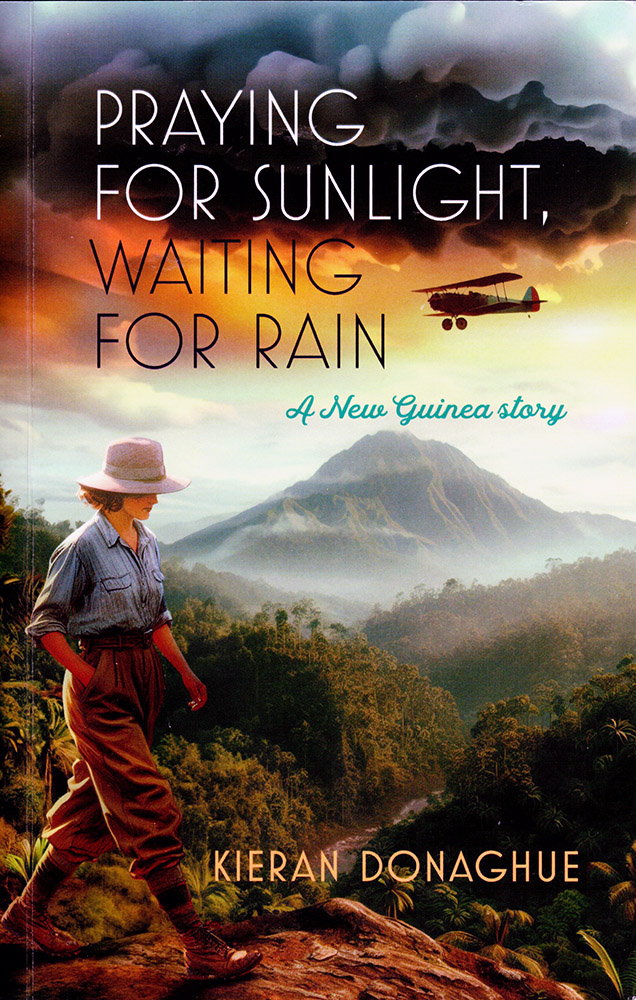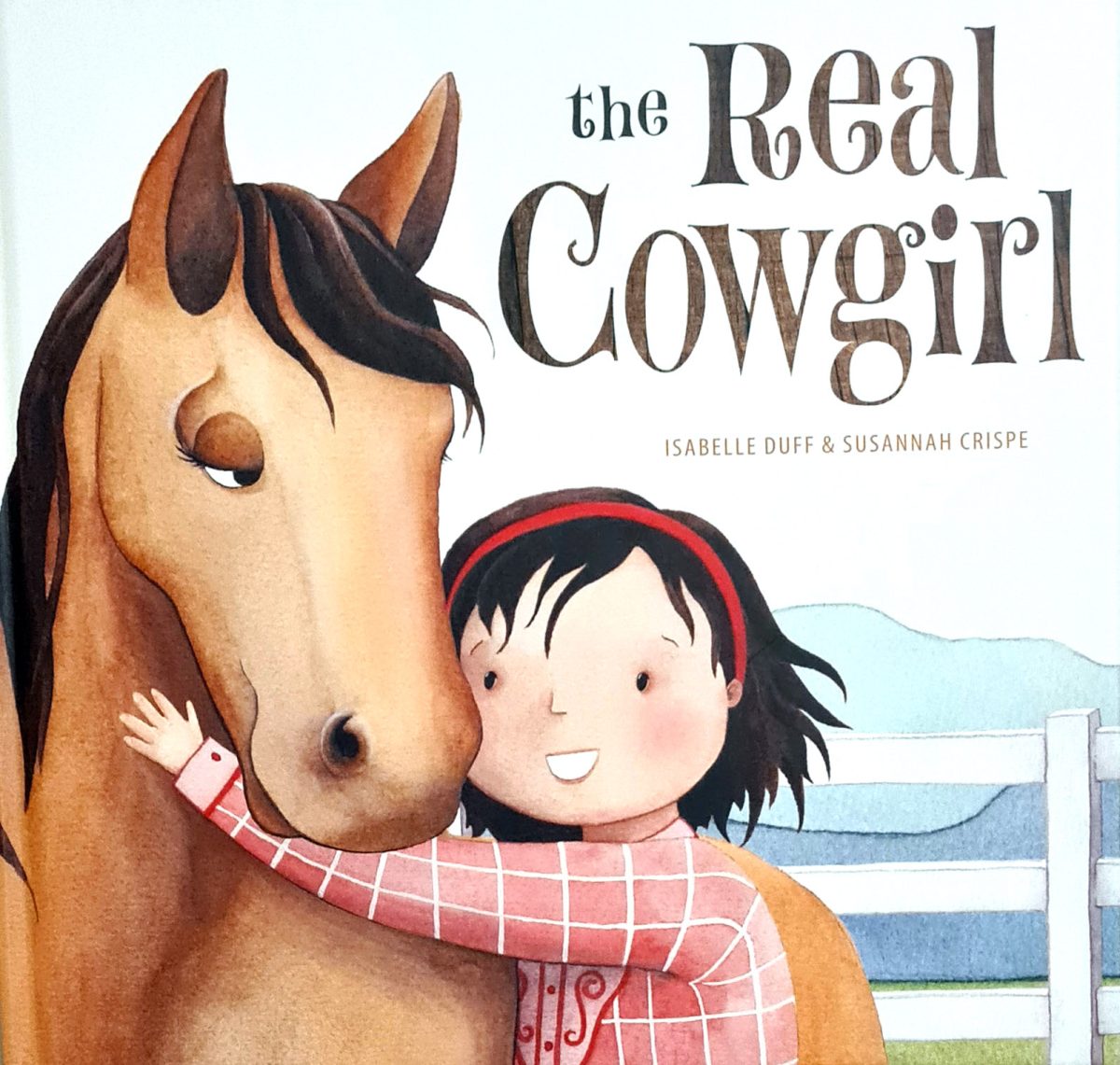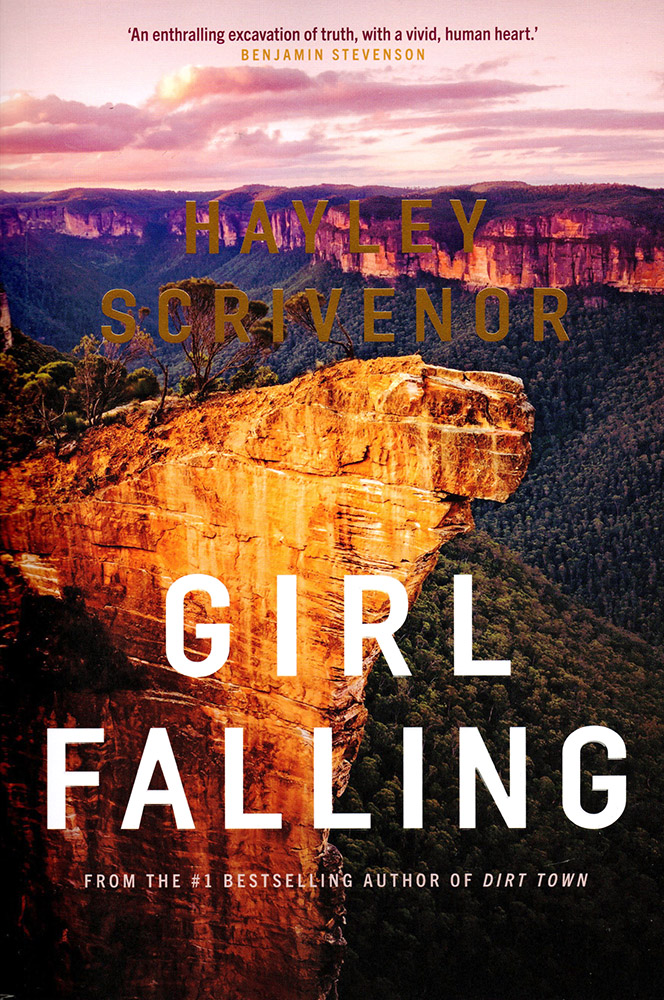
Kieran Donaghue’s Praying for Sunlight, Waiting for Rain broaches age-old questions about cultural contact. Images: Supplied.
Kieran Donaghue – Praying for Sunlight, Waiting for Rain – a New Guinea Story (self-published through Sid Harta Books & Print, cover and internal design Working Type) is a fascinating historical fiction set mostly in the New Guinea highlands between 1937 and 1943. It chronicles the lives and work of Lutheran missionary Carl Starck and his South Australian wife, Ellen.
Ellen proves herself a remarkable character for whom the reader immediately feels empathy and who grows in our estimation as the story moves to its conclusion. She goes against her family’s wishes and values by dating the young Lutheran and then further by joining him in New Guinea.
After an initial understandable culture shock, Ellen soon settles into a life of her own, in which she tries to use her Western medical and education skills to help the people of her village. She develops a sort of fragile friendship with the women but is always at odds with their traditional beliefs and the witchcraft to which they attribute all misfortune.
As the story progresses, the war in Europe comes to New Guinea with Japanese invasion, and the missionaries from all religious denominations must work together to survive.
Whether foreigners are there to mine gold, collect souls or make use of the vulnerable for their own selfish desires, they are generally shown as extractive in their relationships with the country and its people.
This is a thoroughly engaging and enjoyable work that broaches age-old questions about cultural contact.

In The Real Cowgirl, Isabelle Duff and Susannah Crispe tell a charming story of the importance of friendship.
Isabelle Duff and Susannah Crispe – The Real Cowgirl (Ek Books, design by Mark Thacker) is about the importance of friendship to our wellbeing and confidence.
Told from the point of view of little girl Sal’s horse, this story contrasts the brave, happy child she is at home with how she feels at school – small and scared. It’s an astute text choice, enabling observations to be made of behaviour and feelings but from a warm and supportive standpoint.
When Sal finally plucks up the courage to talk about her riding prowess and adventures, she makes a new friend, another keen little rider. Having a (human) friend makes all the difference to Sal, and her life at school thus becomes happier because she can be herself without fear.
Susannah Crispe’s illustrations are tender and winsome, with much emotion portrayed simply through the eyes of the human and equine characters. The spreads include charming features such as small blue birds and flowers, and the palette overall is an appealing mix of pastel and bright.

Hayley Scrivenor spins a thrilling tale of three women in a triangle bound for disaster in Girl Falling.
Hayley Scrivenor – Girl Falling (Macmillian, cover design by Deborah Parry Graphics, cover photo: iStock) is a dark psychological thriller set in the Blue Mountains.
It is not merely the fact that the story involves the fall to her death of a young woman while rock climbing. It is both the intensity of the relationship between main characters Finn and Daphne and the choice of first-person narration that creates this tenebrous quality.
Finn and Daphne are bound by a tragic commonality – the deaths of their sisters. They share a sense of being outsiders, but Finn is also plagued with self-doubt and guilt, while Daphne exudes strength and self-confidence, arrogance even.
Finn’s girlfriend, Magdu, who dies in the fall, is but one victim in this story. We are acutely aware that when Magdu comes on the scene, she is the third person in a triangle bound for disaster. She’s our Greek Chorus, really, stating the ‘’obvious’’ we want to shout ourselves when Finn keeps walking blindly into danger.
Finn’s grief over Magdu’s death manifests itself in inaction. Only the young police officer Dale seems to understand her feelings, her need to see Magdu’s body and the importance of solutions to questions around the death – accident or murder?
And as the story moves through the time following the fall and skips back and forth in the histories of both Finn and Daphne, the reader’s unease turns to active disquiet and anxiety. It’s very Hitchcockian. The resolution is also Hitchcockian, in fact, and leaves us no less disturbed.
What intelligent writing this is! The book people are hyper-real and often disturbing, the mountain landscape a crucial element to both story and atmosphere, and the plot never wavers.
Barbie Robinson is co-founder and a content creator for Living Arts Canberra, a not-for-profit media outfit supporting arts and community in the Canberra region and books worldwide through its website, podcast interviews and a 24/7 internet radio station, at https://www.livingartscanberra.com.au/.












